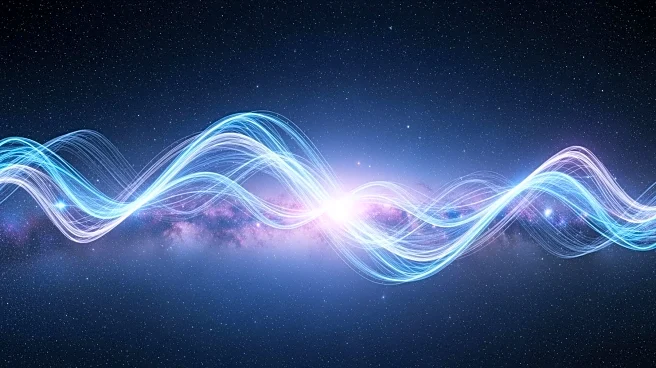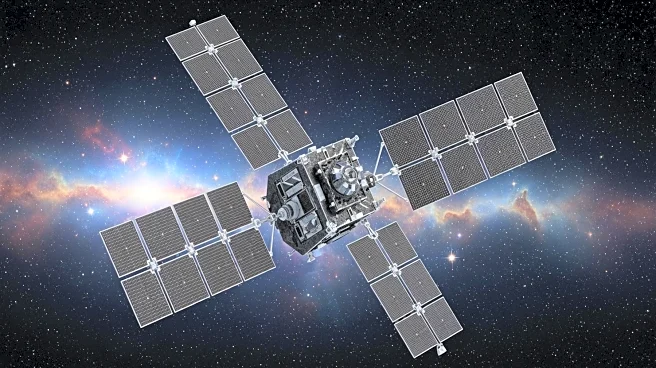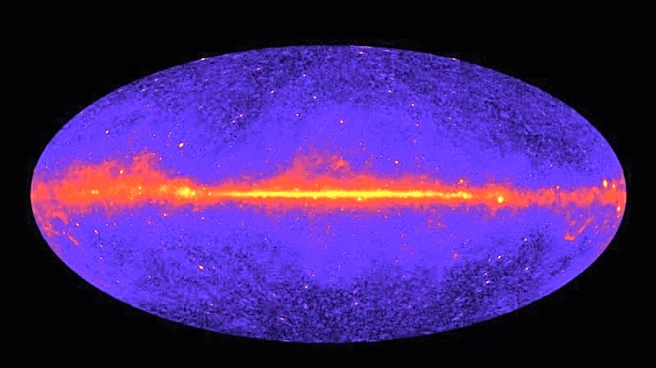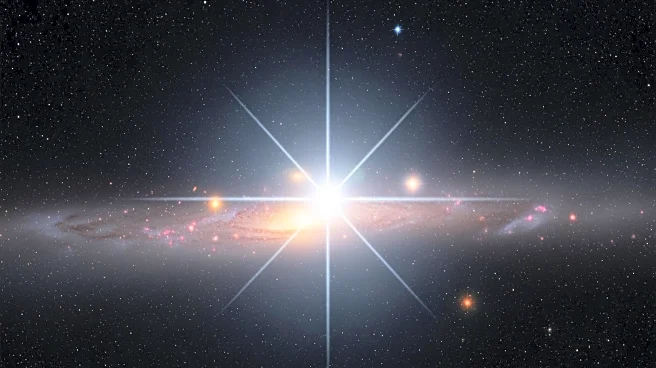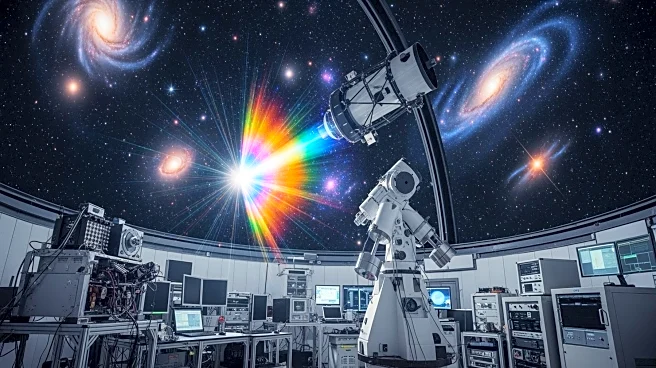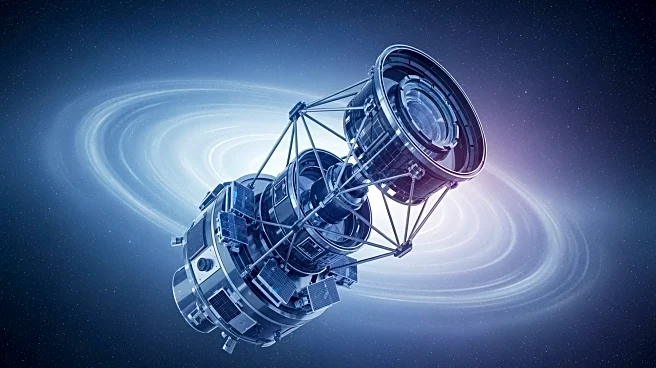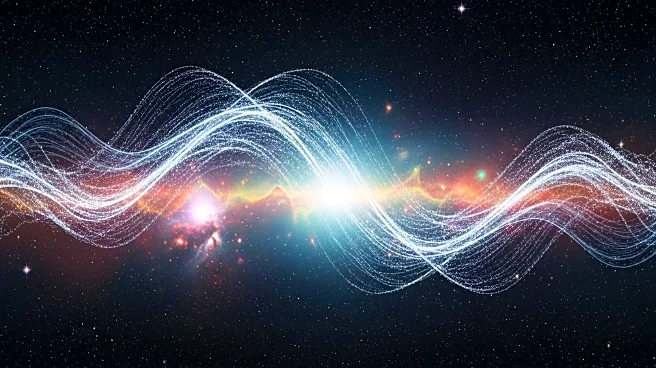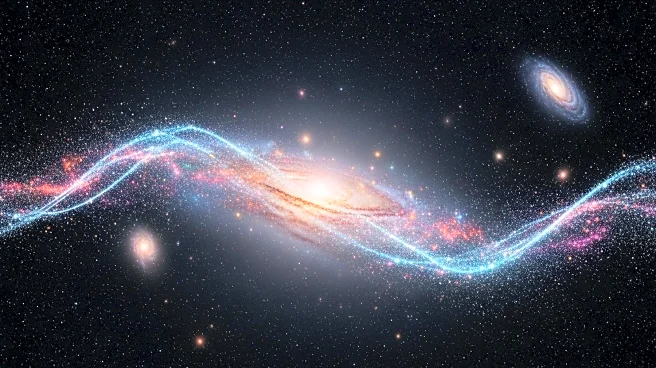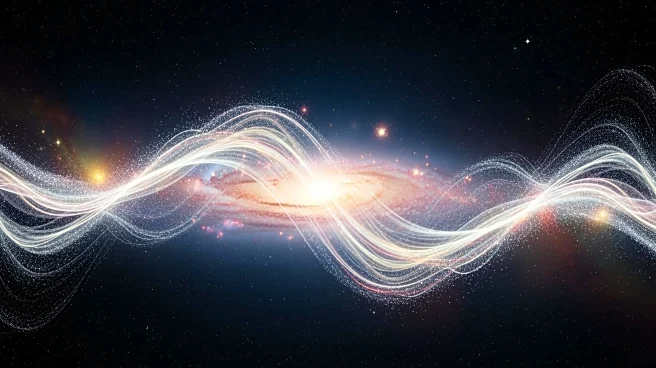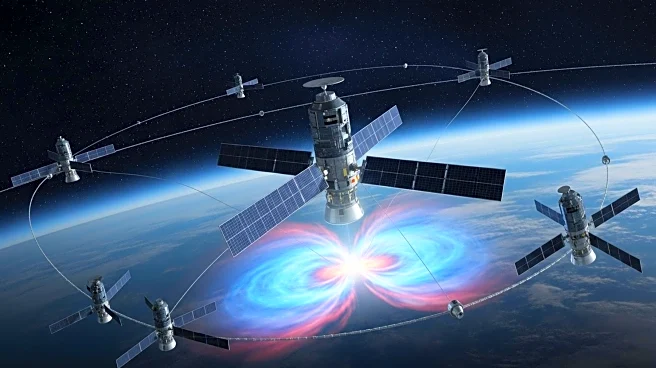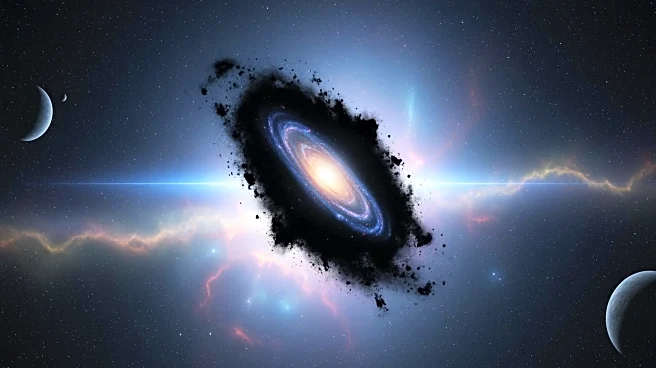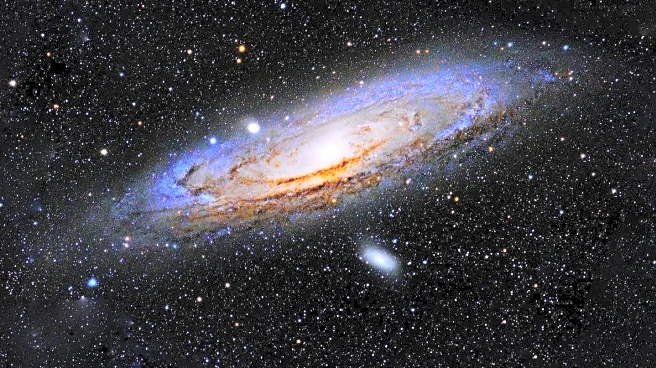What's Happening?
The European Space Agency's Gaia mission has discovered a giant wave rippling through the Milky Way galaxy. This wave, detected through Gaia's detailed mapping of nearly 2 billion stars, stretches across thousands of lightyears from the galaxy's center.
The wave's behavior, observed in the motions of stars, suggests a dynamic structure within the galaxy. The cause of this wave remains unknown, but it may be related to past galactic collisions or other cosmic phenomena. The discovery adds to previous findings of the galaxy's warped and wobbling disc.
Why It's Important?
This discovery provides new insights into the dynamic nature of the Milky Way, challenging previous assumptions about its structure. Understanding the wave's origin could reveal more about the galaxy's history and the forces shaping it. The findings have implications for astrophysics, potentially influencing theories on galactic formation and evolution. The ability to map and analyze such cosmic phenomena enhances our understanding of the universe's complexity and the interactions between celestial bodies.
What's Next?
Further research is needed to determine the cause of the wave. The upcoming fourth data release from Gaia will provide even more detailed information on star positions and motions, aiding scientists in mapping the galaxy's features. This could lead to a better understanding of the wave's impact on the Milky Way and its potential connections to other cosmic events.
